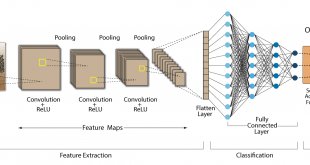Fen Bilimleri Enstitüsü, Geomatik Mühendisliği Programı, İTÜ
Determination And Classifıcation Of Impervıous Surfaces And Their Density Levels Wıth Dıfferent Technıques And Data Integrations
Beril Varol; Derya Maktav, 2020
Abstract: Land Cover/Land Use (LC/LU) maps are important sources of geo-information on observing and investigating the changes, developments in urban cities. Today, with the increase in population, urbanization, social and economic developments make the understanding of different levels of urban fabric more important. LC/LU maps are produced by classification. Classification mainly is divided into two methods being pixel/object-based classification. Recently, object-based classification has been used frequently as it allows the user to use image objects, which are clusters of pixels with similar spectral characteristics, and their relationships. In addition to spectral values used in pixel-based classification, it is possible to include different kinds of functions, features, indices to the classification. Also, it is possible to define manual functions, and object-object as well as class-class relationships can be used. The resulted LC/LU maps can be produced by different classification systems. The nomenclatures and detail levels on class definitions can be changed according to the purpose, extent and the data going to be used. One of the nomenclatures that have the most detailed levels and explanations on urban fabric is Urban Atlas of Copernicus. The urban fabric is divided into five classes and it is selected for use in this study. While it is possible to use open-source supportive data sources in classification, it is also possible to make use of different functions, features, indices and band values. Additionally, texture can be used in classifying and identifying objects and classes in images. The spatial resolution of the image is also important in this case. In high and very high-resolution images, the method is shaped by the resolution and the vector data can impact the classification accuracy. In this study, Bursa city is selected as the study area and the urban fabric is classified in detailed sub-classes. SPOT image with 1,5-meter resolution is used. Different methods of classification and impacts of different data integrations is tested. After the application, a total of 5 Urban Fabric density maps are produced and their total and class accuracies are compared.

Tez No: 637309
 UHUZAM İTÜ – Uydu Haberleşme ve Uzaktan Algılama UYG-AR Merkezi
UHUZAM İTÜ – Uydu Haberleşme ve Uzaktan Algılama UYG-AR Merkezi 